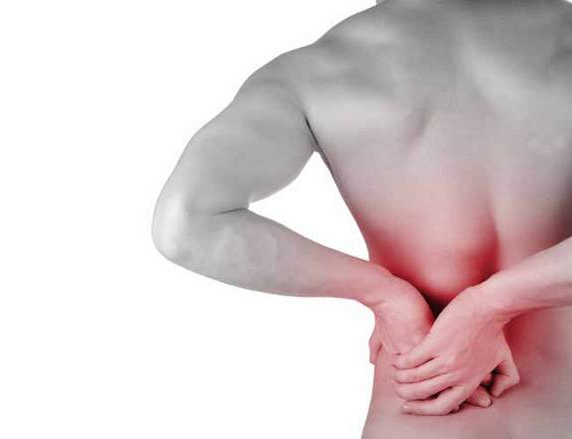Preventative medicine is often how many of the ancient techniques of medical knowledge came into being. Medicine was not symptomatic, it was imperative to keep a balanced state of health to maintain good function. It’s like having a tonic before your nightly vigil, it’s a mode of maintaining health on a continuous scale. Our work is not an emergency room, we don’t come in at the last second and nip tuck and suture emergency procedures to get issues resolved in an hour. Our approach is one of continual maintenance and trying to promote a healthy state of balance so that nothing gets ‘out of balance’.
The pelvis is an interesting and complex joint as it involves one of the largest bony girdles in the body. Human engineering and evolution has seen the pelvis develop from a prone, 4-legged, tail end, to a base of support for the upright biped. Not only that but a biped that moves with alarming speed and agility, leaping, dodging, jumping and balancing on a single leg. These evolutionary developments mean that the pelvis is now very much a key balance point in the body. It serves as the keystone to the central axis around which the body moves. So there are 4 major groupings of muscles that act directly on the pelvis and need to be considered by any person involved with the efficiency of movement. The pelvis can be seen to be a block and tackle structure. A central axis around which 4 main cables pivot and operate. It has a certain amount of tilt and swing that it can tolerate before it becomes compromised. As with all joint spaces, there are pulls on the joint that must be essentially maintained to enable function.
A bad sleeping position can wreak havoc with our dormant indulgences and broken sleep or insomnia can be one of the most debilitating experiences to live with. It makes us sluggish, slow, inefficient and irritable. We are unable to be productive and even the magical elixir of caffeine can’t make a dent in our miserable demeanour. Each of us sleeps in our own way and our own position. Rarely do we find that people have an ideal sleeping pattern or repose that fits the ‘perfect position’ prescribed by mattress companies and pillow manufacturers. Many of us may believe that we sleep like a Disney Princess, calm and serenely laid out on a bed with hands demurely placed on top of our torso. When in reality most of us are more likely to resemble a Tasmanian Devil, sprawled with limbs akimbo and having wedged ourselves into some sort of contorted yoga-esque position that Houdini would be proud of.
As intrinsically social creatures we are better when we join forces. Each individual has their own strengths and their own powers that can benefit and compliment a 'team' or 'project'. Identifying what you are good at and finding the right balance of complimentary 'fabulousness' can only bring about better results. Going down familiar paths needs the input of another element to make you change tack or change process. This can bring about different results - not necessarily better, sometimes worse, but different results nonetheless. This in itself leads to a sense of development. How we choose to interpret that development comes down to our own unique set of values and understanding. But it is true that we are social beings and that when we employ the minds of two people working towards a common goal, it usually serves a higher and better purpose.
Shoulder Dislocation is the term that is often thrown around for any disruption to the shoulder area. However, technically this is not true as a dislocated shoulder refers more to the joint that is the glenohumeral joint. When the arm bone comes out of the fossa (socket) this is technically a shoulder dislocation.
Injury to the Acromio-Clavicular joint is slightly different and technically is termed a Separated Shoulder. It is usually the dislocation of this ‘strut’ that lies over the top of the actual ball and socket joint (glenohumeral) which is the shoulder articulation. The AC Joint is particularly indicated when you have a fall or impact to the area. And just to make more use of the anagram (or ‘I’m rather clever speak’) the term coined is FOOSH (Fall On OutStretched Hand).
osterior knee pain can often be a warning sign for ligamentous damage and stability of the knee joint in flexion and can be a sinister omen of issues with the knee joint itself. However, it can also be a smaller issue related to a muscular tightness that is involved directly in knee flexion and that isn’t part of the hamstring group – the popliteus.
There is a movement of Bio-mechanics which is loosely explained as the ‘physics of movement’. This is looking at the intrinsic value of natural movements and the mechanics of what goes on with our bodies and the amount of movement that we are capable of, the history of movement we are built upon genetically and the science on how the body can move (right down to a cellular and microscopic level). Understanding movement and the possibilities therein has massive effects on how we can function more effectively and efficiently so that our whole system (not just our muscular/connective system) avoids pain.
ntolerances can be the result of the absence of certain enzymes, proteins or chemicals that are needed to process a food substance. An individual may not be able to process a substance as efficiently as others and thus may be lacking in a certain nutrient that prevents the effective digestion of such a food. It’s not a disease, it’s more an imbalance and this can occur on many varied levels throughout the body. In this way intolerances can also depend on the amount of food is ingested. Whilst a small amount may be tolerable, a larger stimulus will result in compromised bodily function on a more debilitating scale.
It's happened - you’ve let your beard grow to an indiscriminate length, you’re buying almond milk at the supermarket and even contemplated hair product for your facial hair and perhaps for the first time in 15 years, purchasing conditioner. And then the quantifying moment that clinches the discovery - your lunch box consists of chick peas and (god forbid I can barely bring myself to admit it) KALE! That ugly, fibrous, vegetable that strips away all senses of pretense that you are the good natured, well mannered, western suburbs grown lad with 1950’s moral fibre instilled in you from your Queen Elizabeth fearing mother. Instead this sanctimonious and self righteous cabbage infects your soul and reveals to you you that you are part of the mutton following herd groupie that is THE HIPSTER!
With cramping, identifying the type of cramping and the nature of the cramp is primary. As in the splinting variety, if you are attempting to rectify a cramp that has actually has benefit to protecting the area then you may be harming the body. Similarly, by releasing a ‘splinting cramp’ you may only get temporary benefit and this may only result in the muscle re-cramping when movement occurs and sometimes as a worse condition than previously. Muscles unable to release spontaneously are very much in need of release and this can come down to electrolyte imbalance, nutrition etc. But which types require what treatment?
Any flexion or extension of the elbow that is deemed painful or of discomfort can in fact be influenced by the supinator and it’s function. Shortening in the muscle can result in the forearm being unable to rotate during elbow flexion which means that performing actions where you bring a resistance load up to your shoulder, can be minimised or even reduced if the supinator is unable to bear the load. At the other extreme, being unable to maintain a ‘palms up’ position against resistance with the shoulder in extension, (such as backstroke or an upward throw of a ball) can also be influenced by a shortening in this muscle.
RSI is more than just ‘typer’s wrist’. It’s a debilitating issue that only results in carpal tunnel syndrome of tendinitis in the wrist – it can also attribute itself to swelling and oedema in the forearm, rendering movement and pressure painful and difficult to deal with.
In seeking a space to do something creative like writing, I can’t do it in just any location. I need to find the right space where I will be comfortable and be able to sit, uninhibited and without disruption that will cause my mind to wander and my brain to flit in and out of focus. In this way, finding that desk space in the top floor, or being in the office after hours when everyone else has left is often a necessary evil to complete such objectives that truly do need creative inspiration to get the right mood and factors flowing.
Bodywork is not necessarily the first port of call when someone thinks about treating mental or emotional conditions. The treatment of depression is primarily a 'cognitive' condition to treat and to administer therapy for. But there is quite a defined link and advantage to approaching something like depression with bodywork. The research of the mind-body connection and the intrinsic advantages to bodywork and the release of neurotransmitters that influence mood and emotions is by far in positive recognition of treating mental conditions with physical therapy. Touch in itself is primally important in the release of hormones and endocrine activity that ultimately influences our ability to feel joy, elation, contentment and all those 'happy emotions' that are so important for emotional balance and well being.
It’s always wonderful to hear client’s stories of achievement. Receiving praise is the elixir of joy for my job. But I am not the miracle worker here. I don’t do the work. It’s up to the individual to put in the hours and time to get results. I just push things around and create the capacity for function. To achieve the tasks, it has to come down to the individual commitment. Even if it’s just fixing a sore shoulder, if the individual doesn’t put in what is needed – the results do not come!
The main issue with a lot of the achilles issues that come about can be assisted with particular release and attention to the deeper 'plantar flexion' muscles, namely the Flexor Hallucis Longus and the Flexor Digitorum Longus. These two smaller muscles are deep to the larger power flexors of the ankle but as always, the small stuff is where the magic is at. These two muscles act on the plantar flexion of the ankle (downward push of the toes and forefoot) and are very active in running and jumping.
The importance of the underlying muscles that act directly on the body are always of primary importance to a practitioner concerned with movement. The Erector Spinae is so often referred to as a 'group' of muscles but they are so important for the individual spinal segmental alignments that can lead us to experience all manner of issues with other parts of our anatomy. Take a look at how lying on the couch can lead to so much more than a flabby stomach...
Any persons concerned with health and maintaining an optimum amount of energy and output has to be aware of the amount of oxygen that is utilised in respiration. It is vital to any function of the body. Even resting respiration is vital to making sure that you can continue to function. Without air and oxygenation of our tissues/organs/blood – we die. Pure and simple.
and strengthening of the neural pathways. New behaviours, new teachings, and even environmental changes or physical injuries may all stimulate the brain to create new neural pathways or reorganise existing ones, fundamentally altering how information is processed.
We are all aware of the dangers of having too much sun. But can we also not get enough. Sun is not an evil to be avoided. There are so many benefits to getting your dose of healthy sunshine and you may well feel so much better for it. Melatonin and Vitamin D are part of the package to a healthy balance, but it's also about other effects that are the reasons you should get out in the sunshine and feel great!






